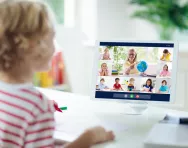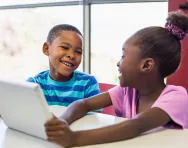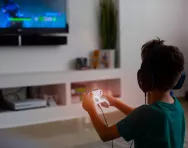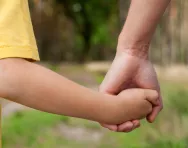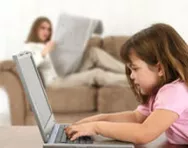How to keep children safe on social media
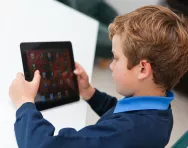
It’s a constant battle and one many parents are very familiar with: how do you give your offspring the independence they crave (and need!) whilst ensuring they remain safe both inside and outside the home? There was a time when we knew our children would come to no harm if they were at home, but the exponential growth in the amount of time we all spend on social media sites means this is no longer the case. It is possible to help your child get the best out of social sites without encountering the worst, though – here are some issues to consider.


Start a unique learning programme!
- Weekly programme for each school year
- Worksheets sent direct to your inbox
- Keeps your child's learning on track
Social media sharing rules for kids (and parents!)
Social media websites are heavily used because they make it easy for people to share information. It's very easy for sharing to turn into over-sharing though – check and update your child's account default settings regularly (with them) to ensure that whatever they share isn't visible to the entire user base of the social network, as opposed to just their own friends.
The most biggest social media challenge is knowing what's appropriate to share (and what isn't). My advice to young people is simple: share only what you would be happy to say out loud in a room full of people. If you wouldn't do that, then don’t share it! However, even with this rule of thumb, many young people still feel over-confident and over-share, and that's where parental guidance and supervision come in.
Children and young people can be impulsive and tend not to think too much about what they are saying and sharing. Try to explain to them what is appropriate and what is not using the guidelines below and using examples from their own lives.
- Anything published online remains there for a very long time (potentially forever). The Internet never "forgets" or loses something because there are all kinds of backups and duplications happening online (and, of course, someone might download something from the Internet onto their own computer). This means that even if you post something in one place, it might end up elsewhere, used by other portals that aggregate information. Once something is online, you lose control over what happens to it; for example, you might see pictures you shared tagged and reshared multiple times by other people. The more exciting the picture, the more attention it gets; celebrity images and stories are a good example of how quickly things can be shared worldwide (the selfie taken at the 2014 Oscars by a handful of celebrities was retweeted over 779,000 times in an hour).
- Always read posts twice before clicking send. The smallest typos can make a huge difference to the meaning (yes, some of those auto-correct errors pictures are real!). How confident do you feel about something that you wrote popping up on a friend’s (or a stranger's) screen? If you think the recipient of the message would enjoy it, send it; otherwise don't.
- If you are sending someone a message, would you tell him/her the same thing face-to-face as well?Somehow it is easier to attack someone from behind a text or email and this is how cyber-bullying starts. If you wouldn’t say it directly to a person then don’t write it.
- You might not appreciate the same humour as your recipient and what you find funny others might find outrageous, disturbing or offensive. If you want to make a joke about someone, think about how they might react before you send.
Why not explore internet safety with your child in an interactive way? The Legends Family Adventure from Google is an online adventure that teaches the key lessons of internet safety through games and the Beware What You Share activity focuses on information-sharing online.
Supervising social media activity
If you think that your children require supervision online, try using some services that integrate with social networks and allow you to see if there is anything strange going on.
Keeping an eye on browsing
Parental control applied to browsing means several things. If you're concerned about safe screen time you might want to:
- Filter the websites your child is allowed to visit based on their content. This includes many categories like sex, violence, games, social networks, etc and functions like a blacklist of addresses. But remember – no blacklist is perfect and new websites go live every second, making it possible for your child’s favourite site to avoid the list
- Control the amount of time they are allowed to spend online.
- Set up a profile / user account for your child on the computer and all the devices they use to access the Internet. Many mobile devices like tablets now allow second profiles which are locked environments to be used exclusively by children.
- If you're finding it difficult to configure your devices, it is possible to do it directly in the router.
New social media trends to look out for
Everything moves fast online, and you might not even have heard of the latest social media craze (but you can guarantee your child will be an expert!).
Image-based sites like Instagram and enhanced messaging apps such as WhatsApp and SnapChat are particularly popular amongst 13+ children; some allow users to put an expiry time/date on their shots which can lull kids into a false sense of security about what they share (it certainly isn't an excuse to send inappropriate pictures, as tech-savvy teenagers have quickly worked out that taking a screenshot of the image keeps it forever!).
Online, the safety message is constant and clear: if you assume everything you send is in the public domain and are still happy to send it, then go ahead. Happy chatting!
Sorin Mustaca is Avira’s IT security expert and author of the eBook Improve your security.

Give your child a headstart
- FREE articles & expert information
- FREE resources & activities
- FREE homework help
